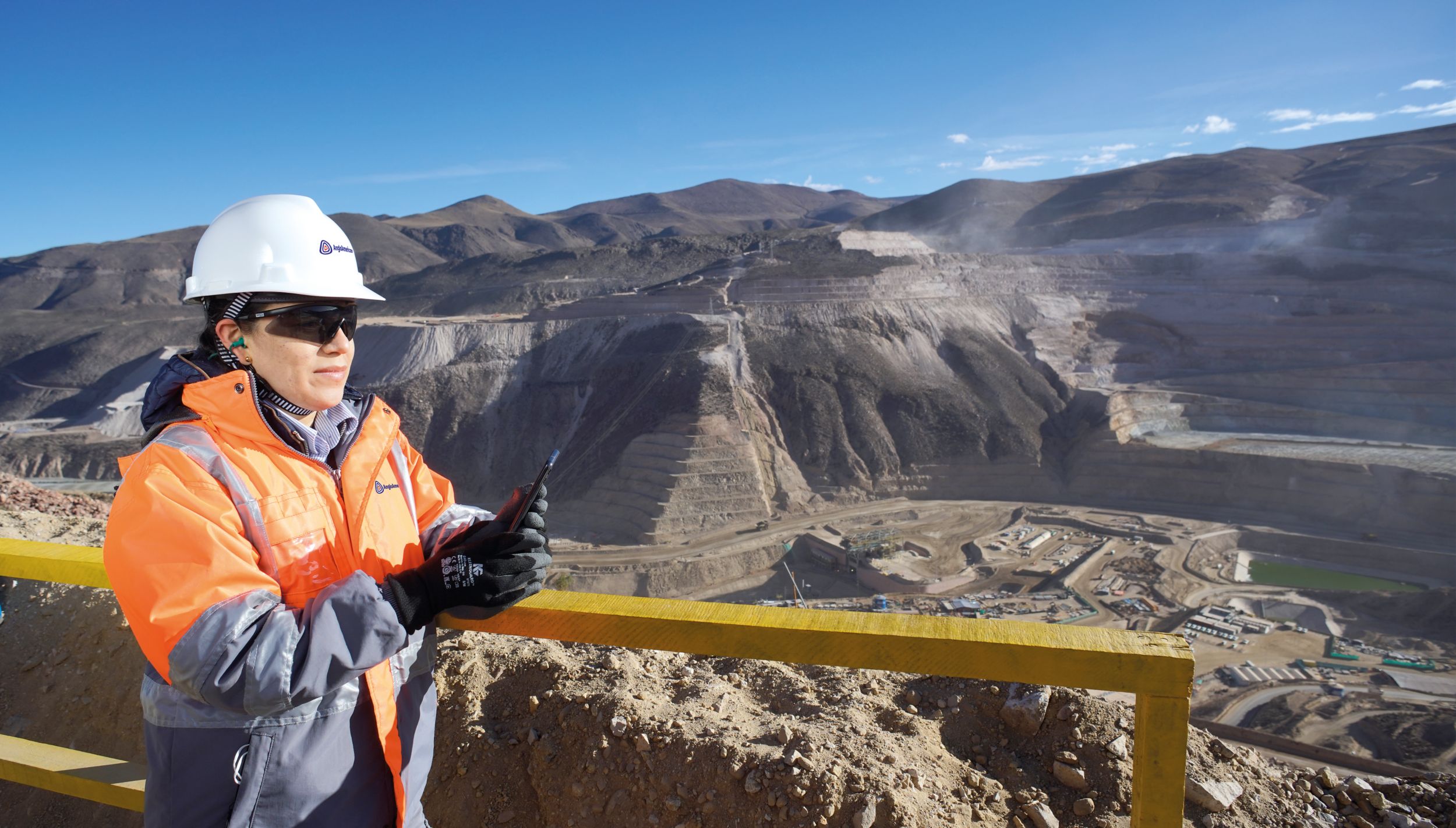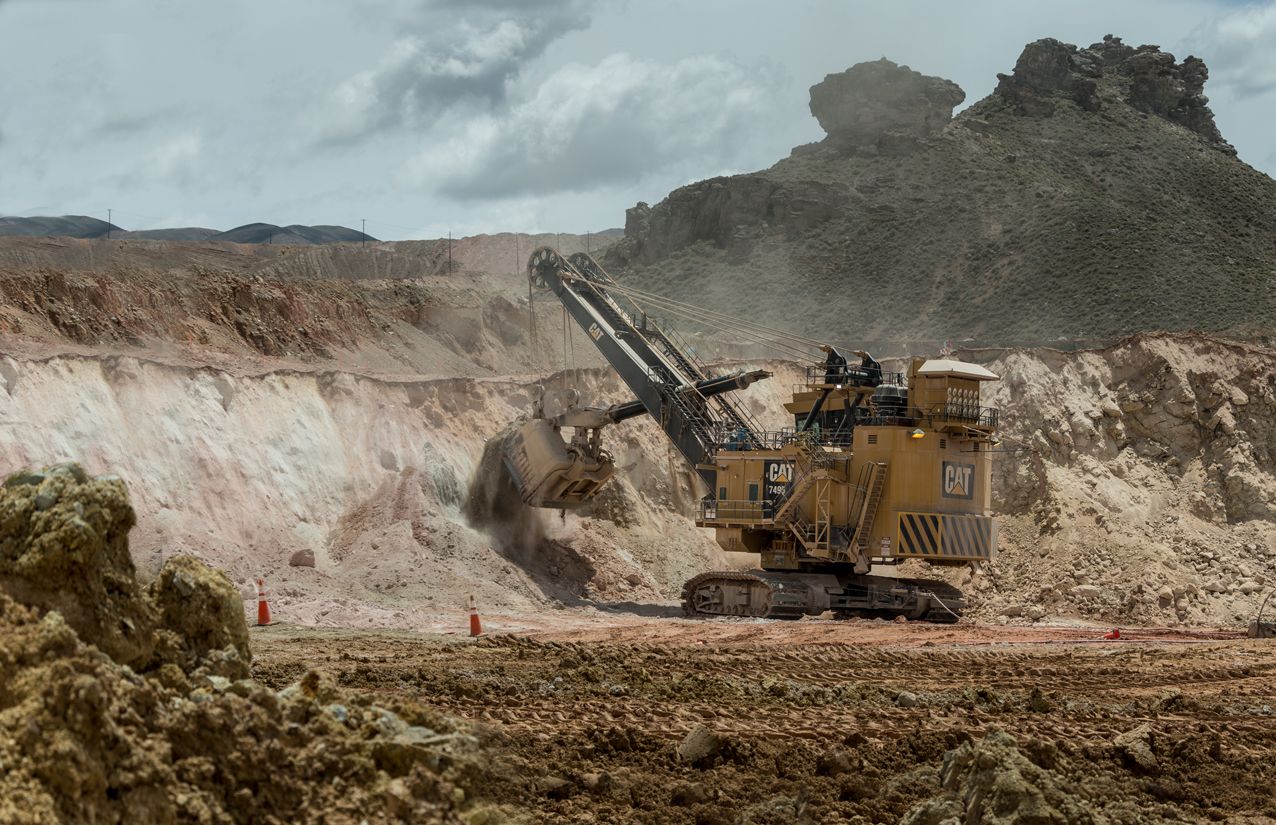If you already have an existing account with another Cat App, you can use the same account to sign in here.
One Account. All of Cat.
Your Caterpillar account is the single account you use to log in to select services and applications we offer. Shop for parts and machines online, manage your fleet, go mobile, and more.
Account Information
Site Settings
Security
Proactively Improving Rope Shovel Uptime at New Peru Copper Mine
See how we worked with Anglo American to reduce boom jack events at their new copper mine.
By Caterpillar | Posted November 27, 2023
More than 15 years of planning and millions of dollars of investment began paying dividends when Anglo American’s new Quellaveco copper mine in Peru began commercial operations late last year. From January to April 2023, the site had already contributed nearly 10% of the country’s total copper production and the ramp-up continues.
During those many years of development, fleets of machines were hard at work preparing one of the world’s largest undeveloped single porphyry copper deposits. In order to meet the projected launch date, Anglo American relied heavily on the work being done by those machines, including three Cat® 7495 Electric Rope Shovels.
When those shovels began experiencing a series of boom jack events, a team from Caterpillar and Cat dealer Ferreyros got to work in search of a solution. They launched a Continuous Improvement (CI) project targeting the root of the problem and provided a solution to help the shovels deliver the uptime and productivity the site requires long into production.
That solution combines a technology feature called Operator Assist – Enhanced Motion Control (EMC) with training and skills development for the greenfield site’s rope shovel operators, many of whom are inexperienced. The solution not only reduced boom jack events but also delivered gains in productivity and machine availability.
BOOM JACK EVENTS
A boom jack occurs when machines crowd against the bank floor and lift the boom with the dipper handle. This triggers faults that adversely affect cycle times, explains Caterpillar Site Performance Manager Paolo Tapia.
“The software on the rope shovel allows extension on the crowd system until it sees resistance,” explains Tapia. “It will stop the crowd force if there is no tension in the hoist ropes, so once the operator applies tension to the hoist ropes, this will allow the crowd to continue to apply force.”
The operator can cause a boom jack in a few methods:
- By running the crowd out at full speed without tension on the hoist ropes. In this case, the inertia of the system will cause the boom to jack before the system can back off on the crowd reference.
- By applying full crowd reference while the hoist is just starting through the bank, which can rock back the boom.
While downtime is an obvious outcome from a boom jack event, the long-term impact on the shovel can be catastrophic.
“Conditions that trigger boom jack events can lead to failure of the suspension ropes and of the frame — and both are going to cost the site a significant amount in terms of both lost production and repair costs,” says Tapia. “It was important that we addressed this issue at Quellaveco before either of those failures happened.”
THE SITUATION AT QUELLAVECO
Data from Quellaveco showed that one of the site’s 7495s experienced a significant number of boom jack events in a single month. A month later, a different shovel registered a similar amount. These numbers would have been even higher if the shovels were not equipped with EMD, which can reduce boom jacks by up to 50%.
“The system was able to prevent half of all the boom jacks — and protect the machine — as it is designed to do,” says Tapia. “So even though the technology was making a positive impact, the cause of the boom jacks still remained.
Caterpillar approached the site with a proposal for a CI project that would identify the causes and find a solution. That proposal included a business case outlining the impact if the problem wasn’t addressed.

Basing calculations on the price of copper, plant capacity and other known parameters, the proposal estimated production losses of $8 million per shovel over 5 years due to the downtime associated with the boom jack events. In the event of a catastrophic failure of suspension ropes and A Frame, the site could expect an additional potential loss of $25 million.
“Considering the number of boom jack events per month, we estimated suspension ropes would fail at 10,000 hours, with 60 hours needed to repair,” Tapia says. “The worst-case scenario combines those previous losses while adding a frame failure that would stop the machine for up to 8 weeks.”
THE SOLUTION
Once Quellaveco agreed to the CI project, the team put the plan into action. They gathered feedback from the Cat Electric Rope Shovels product engineers, engaged with the Quellaveco maintenance and operations management teams, and ensured the boom jack sensors were mechanically regulated to spec.
However, the primary focus of the CI initiative was the rope shovel operators.
“Making sure that the operators have the correct training and develop good skills to prevent boom jacks is the most important thing we can do to correct this problem,” says Tapia. “And while ECM is an important technology tool on its own, it delivers the greatest value when operators are properly trained and understand it.”
The training included assessment of individual skills, classroom and one-on-one training, feedback on performance and regular follow-ups. A Caterpillar rope shovel instructor spent several weeks on site to provide specific training on boom jack events. In addition, the training went beyond boom jack events to improve the overall skills of each individual, recognizing that each operator has different levels of expertise. Each operator received about 3 days of focused training
THE RESULTS
Today, the number of boom jack events at Quellaveco has been reduced by more than 80% per month and has enabled the mine to avoid downtime related to those events. Tapia gives credit to the Operator Assist technology for a large percentage of this significant improvement.
“The EMC system impacts the health of the machines and the site productivity, so there’s much more to be gained than just the elimination of boom jack events,” he says.
Additional benefits of EMC realized by Quellaveco include:
- 77% decrease in crowd overspeeds
- 7% increase in production rate (dollars per ton/hour)
- 5% increase in shovel fill factor
- 36% decrease in shovel loading cycle time
- 15% decrease in truck idle time around the shovel
However, one of the most important outcomes of this CI initiative can’t be explained using numbers and percentages. It’s the relationship that Caterpillar, Ferreyros and Quellaveco continue to nurture as a result of this interaction.
“The site is now tracking the number of boom jack events, which is a good thing,” Tapia says. “And the high engagement from the maintenance and operation managers has resulted in further training for operators, operational improvements on the site and an improved relationship with Caterpillar and Ferreyros.”
GET THE LATEST FROM CATERPILLAR MINING DELIVERED RIGHT TO YOUR INBOX


